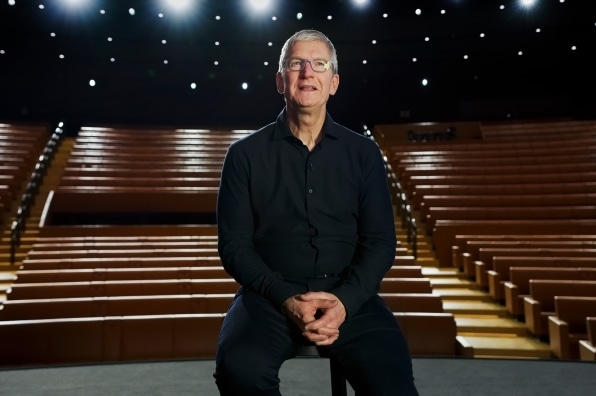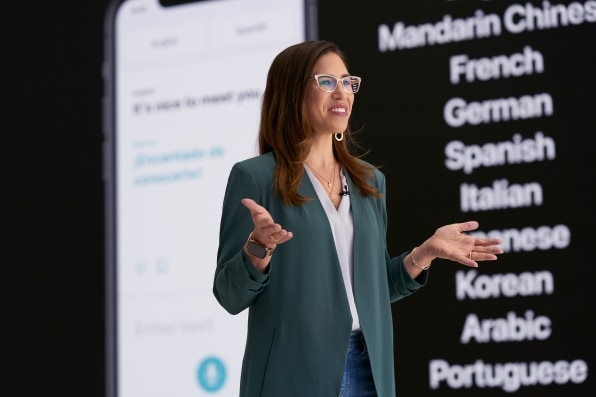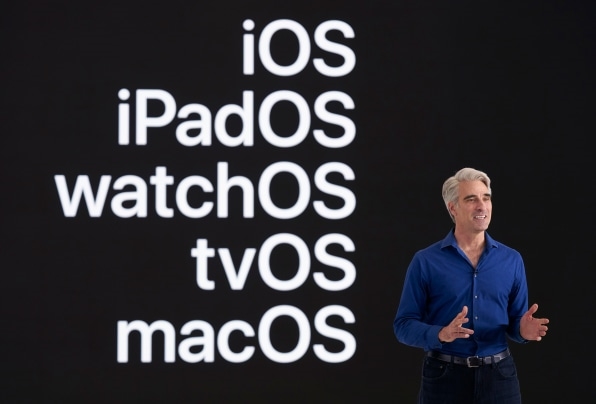Over the past five years, I’ve heard more than one person wonder aloud if the pomp and circumstance of Apple’s live events are always worth all the trouble. I can remember some Apple presentations that were truly memorable, and live attendance was a must. But Apple is in a different place in its history, and more announcements are incremental improvements to existing products instead of brand-new world-changing product lines such as the iPhone. That may change in the future. Maybe when Apple finally announces its augmented reality glasses, for example, it will be crucial to hold a live event—if possible.
But today’s keynote for Apple’s first virtual Worldwide Developers Conference should prove to the company that it can hold compelling virtual presentations for lesser announcements. Apple normally spends months preparing for the WWDC live keynote, at which it announces the latest updates to its various operating systems. The event is also a pep rally to reenergize developers to continue building on Apple platforms. This year, Apple’s virtual approach to the event showed that a live stream could get those jobs done. Though COVID-19 necessitated the move to an online presentation, virtual WWDC may be something that sticks long after the health danger is over—just like other byproducts of the pandemic.
I expected this year’s WWDC to be a bunch of demos filmed in advance in some dark studio or in the depths of the Steve Jobs Theater. But though Tim Cook’s opening remarks were shot in the theater, much of the presentation was shot upstairs in the lobby, with the vegetation of the Apple Park campus visible through the large windows surrounding the space. Other presentations took place in the bright, round space on the lower level just outside the theater, which is made of white stone, beautifully lit from above. This put Apple and its speakers in front of a familiar background that expresses its brand and attitude better, perhaps, than any other. It made the keynote feel like an airy, outside experience, even as most of us have been trapped inside for the past few months.

[Photo: courtesy of Apple]
The video production, of course, was flawless. And Apple didn’t forget to add a bit of humor, with watchOS chief Kevin Lynch doing some exercises in the Apple Watch section and software honcho Craig Federighi slightly out of breath from dashing up the stairs during one interlude.
Tim Cook’s opening comments on the George Floyd death and demonstrations, and on COVID-19, stayed short. Cook talked about racial equity and the pandemic’s effects mostly in relation to Apple’s products and business, not as a free-floating piece of social commentary from a CEO who felt an obligation to mention them. Cook would have likely expressed similar sentiments at a live event—but the quiet of the empty theater in his virtual remarks felt more appropriate than a noisy audience would have.
Apple presentations are no longer male, white, untucked-business-shirt affairs. This year’s WWDC had plenty of female presenters, though very few people of color. Because the presentations were shot in advance, there was zero technical fumbling or presenter nervousness. There was a whole lot of Federighi, but that’s true with most WWDC keynotes lately, and it’s not a terrible thing. He’s a strong presenter and a good face for Apple as a company. In fact, we may have been watching the heir to Tim Cook when Craig was onstage.

[Photo: courtesy of Apple]
Apple’s events aren’t what they used to be. When Apple was a younger company that took more risks, it was always possible that Steve Jobs would come out on stage, say “Oh, and one more thing,” and then casually hold up a new product that would literally change the world. For that kind of news, you wanted to be there to see it live. For some of us who have been fortunate enough to be there for moments like that, it’s an experience we won’t forget.
But Apple keynotes like that haven’t happened for quite a while. The last one I can remember with a historic feel happened back in 2014, when the company announced the Apple Watch, iPhone 6, and iPhone 6 Plus within one event. It was a big deal, and you knew it while you sat there watching. For variations on existing products, new service announcements, and software updates, a live performance may be less necessary.

[Photo: courtesy of Apple]
In recent years, as Apple has live-streamed its keynotes, the bulk of the audience has been made up of Apple enthusiasts. For them, the more polished and efficient flavor of today’s prerecorded event had only upside. And for the two primary in-person constituents of Apple’s live events—members of the press and developers—there are also tangible benefits to a virtual event. While Apple’s live events can be a lot of fun for journalists—they provide a place to hang out with colleagues old and new, and in-sperson, hands-on product demos can’t be replaced—there’s much less stress involved with covering a virtual event. No traffic, no scrambling to get a good seat in the theater, no struggling to find good Wi-Fi or power outlets, and no yearly “running of the journalists” into the theater to jostle for a good seat. It’s easier to record during the event. Screenshots often look better than photos of a live event.
I said before that #digital events can be more #inclusive and open up the opportunity to new voices – that seemed to be the case today with #WWDC20 keynote
— Carolina Milanesi (@caro_milanesi) June 22, 2020
Doing these events virtually—and for free—also makes them more fair for developers. In person, the conference has long cost thousands of dollars to attend and sold out almost instantly. As of last year, developers had to enter a lottery to win a ticket to attend WWDC, which means that only a small percentage of developers got to attend, and only then if they could afford the considerable expense of traveling to San Jose.
Ultimately, both the classic live keynotes and this online one have their trade-offs. But today represents a solid proof of concept for virtual Apple events.
Fast Company , Read Full Story
(50)